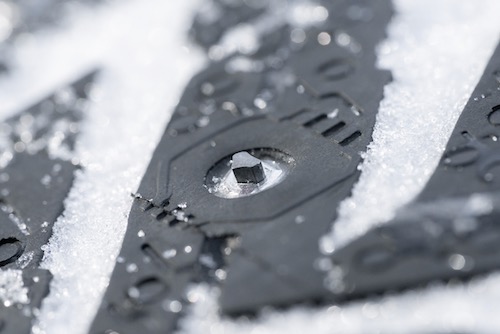Studded tires should be considered if you live in an area that experiences lots of hardpacked snow and ice in the winter. This is because the main advantage of studded tires is the superior grip on icy and hard-packed snowy roads. The studded tires provide an additional level of grip because they are not just interacting with the road surface conditions; the studs penetrate frozen precipitation and dig in like miniature anchors.
They also make a lot of sense if you live in an area with long winters like Alaska or in any of the seven States that allow unrestricted use of studded tires. Studded tires are not allowed in all States, in fact, there are only 7 states in the United States that allow studded tires without restrictions, they are actually prohibited in 11 states, with other states allowing them with date restrictions. Even in the States where studded tires are allowed, it is very important to change out of snow tires after the winter.
In the 7 States that studded tires are allowed without restrictions, studded tires remain the best option to deal with severe winter weather. The studs dig into snow and ice like miniature anchors giving the ultimate grip and traction. When you accelerate, brake, or turn on ice with studded tires you will have the combined advantage of the winter tire compound and the studs clawing into the ice, which will improve the grip and handling responsiveness. Areas where there are often sudden changing weather conditions, that often require chains, is also an area where studded tires are a real advantage. Areas with mountain ranges often experience ice and hardpacked snow as the sun does not reach the road with the shading from the mountains.
In general winter tires should be used when the temperature drops below 45 degrees Fahrenheit however equally important is to take them off after the winter season. There are several reasons why studded tires can’t be used in other seasons than winter. First of all, they are not meant to be consistently driven on warm asphalt as they can cause significant damage both to flexible and rigid pavement. The tires create ruts which fill with water and ice creating spray and hydroplaning. There have been many studies in the effects of pavement wear by studded tires which have actually led to the prohibition of studded tires in certain States. In addition, winter tires are not meant to be used in warmer weather as the softer rubber compound heats up and is unable to grip the road properly making for longer braking distance.
If living in an area with severe winter weather with lots of hard packed snow and ice, where studded tires are allowed, then studded tires can be a real advantage. They offer the best grip and traction of any winter tire. If living in an area like this, you might want to consider investing in a second set of wheels to make the change over more convenient.
For more information regarding studded tires, visit: www.nokiantires.com
